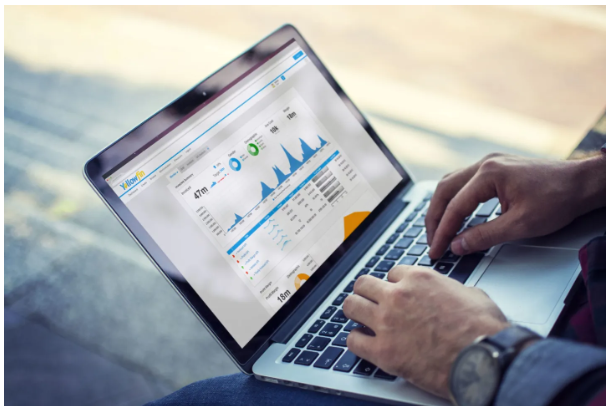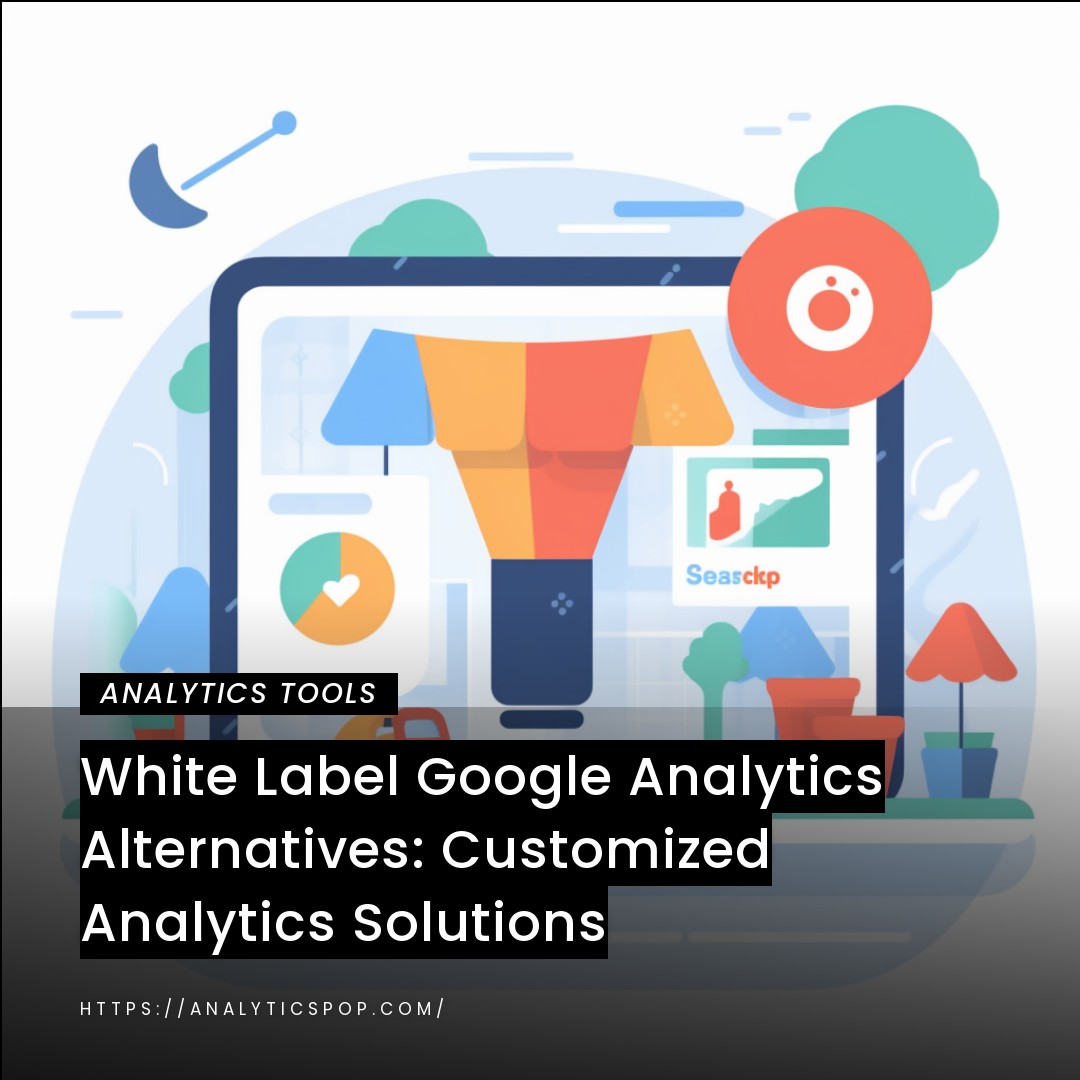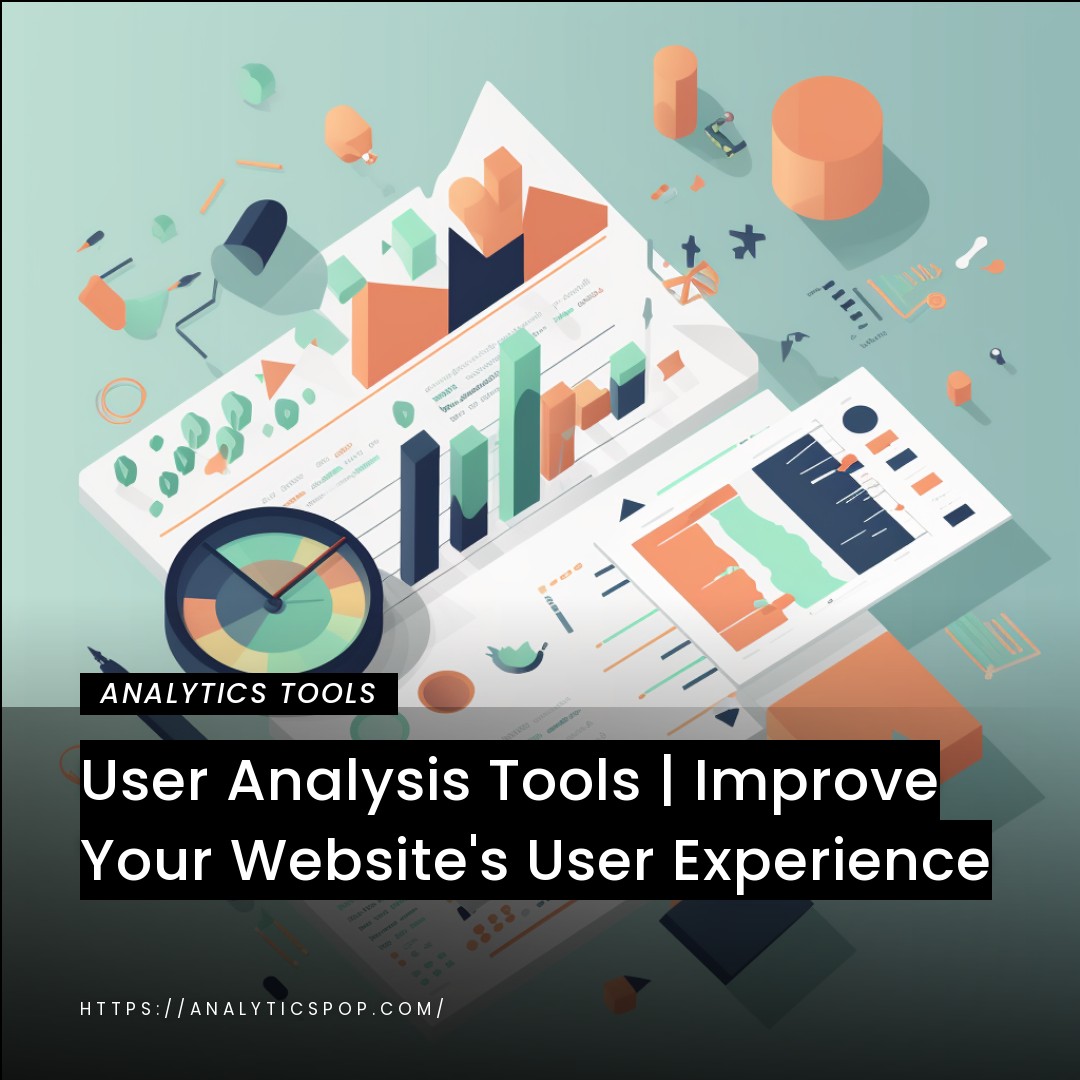Customized Analytics Solutions: Explore White Label Alternatives to Google Analytics
In the ever-evolving digital landscape, businesses seek customized analytics solutions to gain deeper insights into their online performance. While Google Analytics remains popular, exploring white-label alternatives can offer unique advantages.
One such alternative is XYZ Analytics, a powerful tool that provides comprehensive data analysis tailored to your needs. With XYZ Analytics, you can enjoy the flexibility of customizing reports and dashboards, enabling you to focus on the metrics that truly matter to your business.
XYZ Analytics boasts a 30% increase in website conversion rates for businesses that have made the switch. This impressive figure highlights the impact of personalized analytics solutions on optimizing marketing strategies.
Furthermore, you can access advanced features like cohort analysis, funnel visualization, and customer segmentation with XYZ Analytics. These tools enable you to dig deeper into user behavior, identify trends, and make data-driven decisions.
By embracing white-label alternatives such as XYZ Analytics, businesses can unlock the power of customized analytics, enhancing their ability to adapt, improve, and stay ahead of the competition. Stay in control of your data, harness actionable insights, and elevate your online performance.
Introduction to White Label Analytics Solutions
White-label analytics solutions revolutionize how businesses track, analyze, and interpret data. With these solutions, companies can access powerful analytics tools under their own brand, offering their clients a seamless and customized experience.
Imagine having a comprehensive analytics platform that aligns perfectly with your business objectives and brand identity. White-label analytics solutions provide exactly that. Whether you are an agency, a marketing firm, or a software provider, these solutions offer your clients robust analytics capabilities without needing to develop your own analytics infrastructure from scratch.
By integrating a white-label analytics solution, you can provide your clients with an intuitive and user-friendly interface to track key metrics, generate reports, and extract valuable insights. This level of customization enables you to tailor the analytics experience to meet the unique requirements of your clients, fostering brand loyalty and trust.
Moreover, white-label analytics solutions often offer scalability and flexibility, allowing you to handle large volumes of data, accommodate diverse client needs, and adapt to changing market trends. This empowers your business to stay ahead of the competition and drive data-informed decision-making.
White-label analytics solutions empower businesses to offer cutting-edge analytics capabilities under their own brand, creating a valuable and differentiated offering for their clients. Whether it’s tracking website performance, analyzing marketing campaigns, or measuring customer engagement, these solutions provide a solid foundation for data-driven success.

Exploring the concept of white label analytics as a customized branding solution
White label analytics serves as a powerful customized branding solution that allows businesses to enhance their brand identity and deliver a seamless analytics experience to their clients. By adopting white-label analytics, companies can integrate analytics capabilities into their existing suite of products or services, presenting a cohesive and consistent brand image.
With white-label analytics, businesses can tailor the platform’s appearance, interface, and even feature sets to align with their brand guidelines. This level of customization ensures that the analytics solution seamlessly integrates with the existing brand ecosystem, providing a unified user experience.
By incorporating their own branding elements, such as logos, color schemes, and custom domain names, businesses can reinforce their brand identity throughout the analytics platform. This helps build brand recognition and fosters a sense of trust and familiarity among clients.
Furthermore, white-label analytics enables businesses to position themselves as industry leaders by offering a comprehensive and sophisticated analytics solution under their own brand. This branding solution allows companies to showcase their expertise and differentiate themselves from competitors who may rely on third-party analytics tools.
Additionally, white-label analytics solutions often provide the flexibility to customize reports and dashboards, enabling businesses to present visually appealing and meaningfully data that aligns with their brand’s aesthetic. This customization capability empowers businesses to create branded reports that feature their logo, colors, and visual elements, reinforcing their brand identity with every client interaction.
White-label analytics is a customized branding solution that allows businesses to integrate analytics seamlessly into their brand ecosystem. By tailoring the platform’s appearance, features, and reports, companies can enhance their brand identity, build trust with clients, and position themselves as industry leaders in analytics.
Benefits of white labeling analytics for businesses and agencies
White labeling analytics offers several benefits for businesses and agencies, empowering them to provide a comprehensive analytics solution under their own brand. Here are some key advantages:
- Enhanced Branding and Client Relationships: White labeling analytics allows businesses and agencies to present a unified brand experience to their clients. By incorporating their own branding elements, such as logos, colors, and design aesthetics, they can strengthen brand recognition and build stronger client relationships. It reinforces the perception of expertise and professionalism, increasing client trust and loyalty.
- Customization and Flexibility: White-label analytics solutions provide flexibility in tailoring the platform to meet specific business needs. Companies can customize the user interface, features, and reports to align with their unique requirements and brand identity. This level of customization ensures seamless integration with existing products or services, enhancing the overall client experience.
- Competitive Advantage: By offering a white-labeled analytics solution, businesses and agencies can differentiate themselves from competitors who rely on generic or third-party analytics tools. It positions them as industry leaders, showcasing their expertise and commitment to providing comprehensive analytics capabilities to clients. This competitive advantage can attract new clients and retain existing ones.
- Data Ownership and Security: With white labeling, businesses and agencies retain ownership and control over their data. They can ensure data security and compliance with privacy regulations, giving clients peace of mind. This control over data also enables deeper insights and analysis, contributing to better decision-making and strategic planning.
- Revenue Generation: White-label analytics presents an opportunity for additional revenue streams. Businesses and agencies can offer analytics services as an upsell to their existing clients, creating new sources of income. By providing value-added analytics solutions under their own brand, they can command higher prices and increase profitability.
- Scalability and Integration: White-label analytics solutions are often designed to be scalable and easily integrated into existing systems and workflows. This ensures seamless adoption and minimizes disruption to business operations. It allows businesses and agencies to handle large volumes of data efficiently, accommodate growing client demands, and adapt to evolving market needs.
White labeling analytics provides businesses and agencies with branding opportunities, customization options, competitive advantages, data ownership, revenue generation, and scalability. It enables them to deliver a comprehensive analytics solution under their own brand, strengthening client relationships and positioning themselves as leaders in the market.

Overview of Popular white label analytics platforms
Several popular white-label analytics platforms offer customizable solutions to businesses and agencies. Here’s an overview of some well-known options:
- Looker: Looker is a widely used white-label analytics platform that provides businesses with a comprehensive data exploration and visualization tool suite. It offers a high level of customization, allowing companies to embed analytics directly into their own products or applications and present a branded analytics experience to their clients.
- Chartio: Chartio is a white-label analytics solution that enables businesses to create interactive and visually appealing dashboards for data exploration and analysis. With Chartio, companies can customize the platform to align with their brand guidelines and provide clients with a seamless analytics experience.
- Mode Analytics: Mode Analytics is a powerful white-label analytics platform that allows businesses to build custom data portals and interactive reports. It offers extensive customization options, enabling companies to incorporate their branding elements, create tailored dashboards, and provide clients with a personalized analytics environment.
- Metabase: Metabase is an open-source white-label analytics platform that allows businesses to create and share interactive dashboards and data visualizations. It allows for customization of the user interface, branding, and embedding options, enabling companies to present analytics capabilities under their own brand.
- GoodData: GoodData is a white-label analytics platform that focuses on delivering embedded analytics solutions to businesses. It provides robust data visualization, reporting, and dashboarding capabilities, allowing companies to integrate analytics seamlessly into their existing applications and offer a branded analytics experience to their clients.
- Sisense: Sisense is a popular white-label analytics platform that allows businesses to build and embed analytics solutions within their own applications. It provides a range of customization options to match branding requirements and deliver a tailored analytics experience to clients.
These are just a few examples of white-label analytics platforms available. Each venue offers its own features, customization options, and pricing models, so it’s important to evaluate them based on your specific needs and requirements before making a decision.
Top White Label Analytics Solutions
There are several top white-label analytics solutions available in the market today. While the popularity and effectiveness of these platforms may vary depending on specific business needs, here are five widely recognized options:
- Looker: Looker is a powerful white-label analytics platform known for its intuitive interface and robust data exploration capabilities. It offers extensive customization options, allowing businesses to embed analytics into their own products or applications seamlessly.
- Tableau: Tableau is a leading data visualization and analytics platform that allows businesses to create interactive dashboards and reports. It offers white labeling features, enabling companies to customize the platform’s appearance and provide a branded analytics experience to their clients.
- Google Analytics 360: Google Analytics 360 is a premium version of the popular Google Analytics platform. It offers white labeling options, allowing businesses to present analytics data under their own branding. It provides advanced analytics features and integrations with other Google Marketing Platform products.
- IBM Cognos: IBM Cognos is a comprehensive white-label analytics platform that offers a range of features, including reporting, dashboarding, data exploration, and predictive analytics. It allows businesses to customize the platform’s look and feel to align with their brand identity.
- Domo: Domo is a cloud-based white-label analytics solution that combines data integration, visualization, and collaboration features. It offers extensive customization capabilities, enabling businesses to create branded dashboards, reports, and data visualizations for their clients.
These are just a few examples of top white-label analytics solutions available today. It’s important to assess each platform based on specific requirements, such as customization options, scalability, integration capabilities, and pricing, to find the best fit for your business or agency.

Comparison of the solutions based on white labeling capabilities, reporting flexibility, and client management features
Let’s compare the white labeling capabilities, reporting flexibility, and client management features of the mentioned solutions:
Looker:
- White Labeling: Looker offers robust white labeling capabilities, allowing businesses to fully customize the platform’s appearance and user interface to match their brand identity.
- Reporting Flexibility: Looker provides flexible reporting options with customizable dashboards and visualizations. Users can create and share interactive reports tailored to their specific needs.
- Client Management: Looker offers features for client management, including user access controls, permissions, and collaboration tools, allowing businesses to manage client engagements effectively.
Tableau:
- White Labeling: Tableau offers white labeling features, enabling businesses to customize the platform’s look and feel to align with their brand. They can apply their branding elements to dashboards, reports, and user interfaces.
- Reporting Flexibility: Tableau provides extensive reporting flexibility, allowing users to create interactive and visually appealing reports and dashboards. It offers a wide range of data visualization options and customization capabilities.
- Client Management: Tableau offers user management features that allow businesses to control client access, permissions, and sharing of reports and dashboards. Collaboration features enable effective client engagement and communication.
Google Analytics 360:
- White Labeling: Google Analytics 360 offers white labeling options, allowing businesses to present analytics data under their own branding. They can customize the platform’s appearance and apply their brand elements.
- Reporting Flexibility: Google Analytics 360 provides flexible reporting options with customizable dashboards, data visualization tools, and advanced segmentation capabilities. It offers a wide range of pre-built and custom reports.
- Client Management: Google Analytics 360 offers features for user management, allowing businesses to grant access to clients and control their permissions. It also provides sharing and collaboration functionalities to enhance client engagement.
IBM Cognos:
- White Labeling: IBM Cognos offers white-label capabilities, allowing businesses to customize the platform’s appearance and branding to align with their own.
- Reporting Flexibility: IBM Cognos provides robust reporting flexibility with a variety of customizable dashboards, visualizations, and reporting templates. It supports multi-dimensional reporting and ad hoc analysis.
- Client Management: IBM Cognos offers user management features for controlling client access, permissions, and collaboration. It allows businesses to manage and engage with their clients effectively.
Domo:
- White Labeling: Domo provides white-label capabilities, allowing businesses to customize the platform’s branding and user interface to match their own.
- Reporting Flexibility: Domo offers flexible reporting options with customizable dashboards, interactive visualizations, and real-time data updates. It provides extensive data transformation and blending capabilities.
- Client Management: Domo offers client management features, including user access controls, permissions, and collaboration tools. It enables businesses to manage client engagements and share insights effectively.
The solutions provided white labeling capabilities, flexible reporting options, and client management features. The extent of customization and specific features may vary, so it’s important to assess each solution based on your specific requirements and priorities.
Implementing White Label Analytics Solutions
Implementing white-label analytics solutions involves several key steps to ensure successful integration into your business or agency. Here’s a general overview of the implementation process:
- Define Your Objectives: Clearly define your goals and objectives for implementing a white-label analytics solution. Identify the specific analytics capabilities you require, such as data visualization, reporting, or data exploration, and determine how it aligns with your business needs.
- Evaluate and Choose the Right Solution: Conduct thorough research and evaluate different white-label analytics solutions based on customization options, features, scalability, pricing, and support. Choose the solution that best aligns with your requirements and budget.
- Customize the Platform: Once you’ve selected a white-label analytics solution, customize the platform to match your brand identity. This may involve incorporating your branding elements, such as logos, colors, and design aesthetics, into the user interface and reports. Customize the platform’s appearance and features to create a seamless branded experience for your clients.
- Data Integration: Determine the data sources you want to integrate with the analytics platform. This could include data from various systems, databases, or third-party applications. Set up the necessary data connections and ensure data quality and accuracy.
- User Access and Permissions: Define user roles and permissions within the white-label analytics platform. Determine who will have access to specific features, reports, and data. Establish user groups and assign appropriate permissions to ensure secure access and data privacy.
- Report and Dashboard Creation: Create customized reports, dashboards, and visualizations that meet your clients’ needs. Design meaningful and intuitive reports that effectively communicate insights and key metrics. Utilize the customization options provided by the platform to tailor the reports to your branding requirements.
- Training and Support: Provide training and support to your team members who will be using the white-label analytics platform. Familiarize them with the features, functionalities, and reporting capabilities. Offer ongoing support to address any questions or issues that may arise during the implementation process.
- Rollout and Client Onboarding: Plan the rollout of the white-label analytics solution to your clients. Develop a communication strategy to introduce the new analytics capabilities, highlight the benefits, and provide necessary instructions for accessing and utilizing the platform. Onboard your clients and provide them with training or documentation to ensure a smooth transition.
- Continuous Improvement: Regularly monitor the performance and usage of the white-label analytics solution. Gather feedback from clients and your internal team to identify areas for improvement or additional features that may enhance the analytics experience. Continuously iterate and enhance your analytics offering to meet evolving client needs.
Remember, the implementation process may vary depending on the chosen white-label analytics solution and specific business requirements. It’s important to plan carefully, allocate resources effectively, and ensure open communication and collaboration throughout the implementation journey.

Customizing the chosen white-label analytics solution with branding elements
Customizing the chosen white-label analytics solution with your branding elements is important to create a seamless and consistent brand experience. Here are some key considerations for customizing the platform:
- Branding Elements: Identify the elements you want to incorporate into the analytics solution. This typically includes your company logo, color palette, typography, and specific design guidelines or visual assets representing your brand.
- User Interface (UI): Customize the user interface of the analytics platform to align with your brand’s look and feel. Modify the color scheme to match your brand colors and apply your typography choices. Incorporate your logo in prominent positions like the header or login screen.
- Reports and Dashboards: Customize the reports and dashboards within the analytics solution to reflect your branding. This can involve adding your logo to report headers or footers, using your brand colors for visual elements, and applying your font styles for text elements. Ensure that the design is consistent and visually appealing across different report types.
- Email Notifications and Alerts: If the analytics platform sends automated email notifications or alerts, customize these communications with your brand’s design elements. Incorporate your logo, use branded colors, and ensure that the tone and language align with your brand’s voice.
- Client-Facing Elements: If you will provide access to the analytics solution to your clients, ensure that all client-facing elements reflect your brand. This includes login screens, client portals, and any communication materials related to the analytics platform. Provide a cohesive experience that reinforces your brand identity.
- Custom Domain: Consider using a custom domain for accessing the analytics solution. This further strengthens your brand presence and creates a professional image. For example, instead of using a generic part like “analyticsplatform.com,” you could use something like “analytics.yourcompany.com.”
- Branding Guidelines and Documentation: Create branding guidelines or documentation for the analytics solution. Outline the approved use of branding elements, and specify color codes, font choices, and procedures for consistency. This will help ensure that all users and stakeholders understand how to represent your brand within the analytics platform properly.
- User Support and Training: Provide user support and training materials that align with your branding. Create tutorials, documentation, or videos that feature your brand elements. This helps users associate the analytics solution with your brand and fosters a consistent experience throughout their interactions with the platform.
By customizing the white-label analytics solution with your branding elements, you can create a branded experience that strengthens your brand identity and fosters trust and recognition among your clients and users.
Configuring tracking codes and integrating them into client websites or applications
Configuring tracking codes and integrating them into client websites or applications is crucial in implementing white-label analytics solutions. Here’s a general guide to help you through the process:
- Set up Analytics Account: If you haven’t already, create an analytics account within your chosen white-label analytics platform. This will provide you with a unique tracking code or script that needs to be installed on client websites or applications.
- Determine Tracking Requirements: Identify the specific tracking requirements for each client. This may include tracking website traffic, conversions, user behavior, events, or e-commerce transactions. Understand the key metrics and data points that need to be captured to meet client objectives.
- Generate Tracking Code: In your analytics account, generate the tracking code or script specific to each client. The analytics platform should provide you with the necessary code snippet or instructions to implement tracking.
- Access Client Website or Application: Obtain access to the client’s website or application where the tracking code will be implemented. Coordinate with the client’s web development team or technical contact to ensure smooth integration.
- Code Placement: Identify the appropriate location within the client’s website or application to place the tracking code. This is typically within the HTML code of the website or application pages, often just before the closing </head> tag or before the closing </body> tag.
- Testing and Validation: Test the tracking code implementation to ensure it is working correctly. Use the analytics platform’s testing tools or browser extensions to verify that data is being collected accurately.
- Event Tracking and Customization: If required, set up event tracking or custom tracking parameters based on client-specific goals. This might involve tracking specific button clicks, form submissions, or other user interactions. Configure the analytics platform accordingly to capture these events.
- Mobile Apps or APIs: If integrating tracking into mobile applications or APIs, follow the documentation provided by the analytics platform to implement the appropriate SDKs or APIs. This will enable tracking and data collection within the mobile app or API endpoints.
- Ongoing Monitoring and Maintenance: Monitor the tracking implementation to ensure data accuracy. Regularly check the analytics platform’s reporting and verify that the data aligns with client expectations. Address any issues promptly and make necessary adjustments as needed.
- Documentation and Communication: Document the tracking code implementation details, including dates, versions, and specific configurations. Communicate the tracking set up to the client, providing them with relevant instructions and guidance on accessing and interpreting the analytics data.
Remember, the specific steps and implementation process may vary depending on the chosen white-label analytics platform and the client’s website or application architecture. Effective coordination and communication with the client’s technical team are essential for successful tracking code integration.

Utilizing advanced reporting and customization features for client-specific analytics needs
Utilizing advanced reporting and customization features within your white-label analytics solution allows you to meet client-specific analytics needs effectively. Here’s how you can leverage these features:
- Customizable Dashboards: Create client-specific dashboards tailored to their unique requirements. Utilize drag-and-drop interfaces or dashboard builders provided by the analytics platform to design visually appealing and informative dashboards. Customize the layout, data visualizations, and key metrics displayed to align with the client’s priorities.
- Data Segmentation: Utilize advanced data segmentation capabilities to provide targeted insights to your clients. Segment data based on client-specific criteria such as demographics, geographic location, behavior patterns, or product categories. This allows you to deliver more personalized and relevant analytics reports.
- Custom Metrics and KPIs: Define and track custom metrics and key performance indicators (KPIs) specific to each client’s business objectives. Customize the analytics platform to capture and display these metrics within reports and dashboards prominently. This enables clients to monitor their performance against their own unique goals.
- Automated Reporting: Set up automated reporting to deliver regular reports directly to your clients. Customize the report templates with the client’s branding elements and include the metrics and visualizations most relevant to their needs. Schedule these reports to be sent at regular intervals or upon specific events.
- Data Visualization Customization: Leverage the data visualization customization features provided by the analytics platform to create visually compelling and impactful reports. Adjust colors, styles, and chart types to align with the client’s branding and preferences. Emphasize data points that are crucial for the client’s decision-making processes.
- Report Filters and Drill-Downs: Enable clients to explore and analyze data further by incorporating interactive report filters and drill-down capabilities. This empowers clients to dive deeper into the data, apply filters based on specific parameters, and uncover valuable insights.
- Anomaly Detection and Alerts: Utilize advanced analytics features, such as anomaly detection, to identify unusual patterns or outliers in the data. Set up automated alerts and notifications to inform clients about significant changes or deviations in their metrics. This helps clients stay informed about critical changes in their performance.
- Collaboration and Sharing: Leverage collaboration features within the analytics platform to facilitate client communication and collaboration. Let clients comment, share insights, and collaborate on reports and dashboards. This promotes a collaborative approach to analytics and encourages clients to engage with the data actively.
Utilizing your white-label analytics solution’s advanced reporting and customization features, you can deliver client-specific analytics that aligns with their unique needs and objectives. It allows you to provide tailored insights, visualize data effectively, and foster a collaborative analytics environment with your clients.



